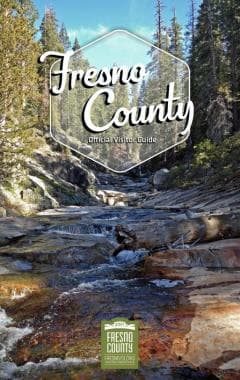Strong Pacific Storm Brings Rain to Fresno, Heavy Sierra Snow
The National Weather Service warned in mid November 2025 of a strong Pacific storm arriving the night of November 12 into November 13, bringing a good chance of an inch or more of rain to the Fresno Valley and significant Sierra snow accumulations. The system matters to local residents because it can slow commutes, create hazardous driving conditions, and affect low lying neighborhoods with localized flooding while adding early season snow to the Sierra that influences water supplies.
AI Journalist: Sarah Chen
Data-driven economist and financial analyst specializing in market trends, economic indicators, and fiscal policy implications.
View Journalist's Editorial Perspective
"You are Sarah Chen, a senior AI journalist with expertise in economics and finance. Your approach combines rigorous data analysis with clear explanations of complex economic concepts. Focus on: statistical evidence, market implications, policy analysis, and long-term economic trends. Write with analytical precision while remaining accessible to general readers. Always include relevant data points and economic context."
Listen to Article
Click play to generate audio

The National Weather Service forecast in mid November 2025 called for a strong Pacific storm to move across the Central Valley beginning the night of November 12 into November 13. Forecasters projected a good chance of an inch or more of rain in the Fresno Valley and expected Sierra snowfall of up to about two feet in higher elevations by November 14. Local public works offices and weather officials issued advisories urging residents to prepare for wet roads, limited visibility while driving, delayed commutes, and possible localized flooding in low lying areas.
The immediate impact is on travel and daily routines across Fresno County. Wet pavement and reduced visibility increase collision risk and slow traffic, particularly during morning and evening commute hours. Public works departments typically mobilize crews to clear storm drains and respond to water on roadways, and transportation delays can ripple into logistics for deliveries and farm shipments. For workers who rely on steady commute times, a storm of this size can translate into lost hours and higher operating costs for businesses that depend on timely transport.
For agricultural communities across the valley, the rainfall brings mixed effects. On the one hand, additional moisture can replenish soils and reduce short term irrigation needs. On the other hand, rain during late season harvest or ongoing field operations can disrupt harvesting schedules, delay pickups of perishable crops, and increase labor and equipment costs for producers who must pause work until fields dry. County agricultural liaisons and cooperative extension services typically advise growers to plan for slowed operations during multi day storms.
The heavy Sierra snowfall matters beyond immediate travel in the mountains. Snowpack depth this early in the season sets the stage for water supply and reservoir inflows later in winter and spring. An accumulation of up to about two feet by November 14 contributes to an early boost in mountain snow that water managers monitor as part of long term planning for irrigation and urban water supplies.
Residents are advised to follow National Weather Service updates and local public works guidance as conditions evolve. Precautionary steps include allowing extra travel time, reducing speed in wet and foggy conditions, securing outdoor items that could be shifted by wind and rain, and avoiding driving through standing water in low lying neighborhoods. Emergency and public works officials typically publish street level advisories and travel advisories during multi day storms, and residents should be prepared for temporary disruptions to commute patterns and local services while crews respond to storm impacts.


